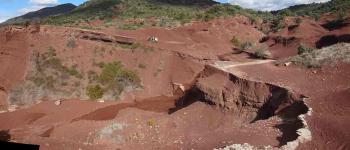
The most likely hypothesis is that the name Maraussan originated from Marucius, a Roman legionary who was granted land by Rome on the banks of the Orb River to earn a living from agriculture after retiring from service.
It is known that from this time on, vines were present in the region, supplying the Roman Empire with wine.
A Little History...
When the invaders were driven out by Pepin the Short in 752, the establishment of numerous abbeys, which served as inns, revived viticulture in the region.
Until the 13th century, the region suffered several invasions and wars, reaching its peak in 1209, when Béziers and the surrounding villages were sacked, leaving them depopulated.
In 1230, the Bishop of Béziers established a settlement in Maraussan and Villenouvette and transformed a chapel into a church on its current site.
In 1375, Charles V ceded all the property to Jean Perdiguier, Treasurer General of Languedoc, who built the castle that still stands today on the site of a fortified town named En Auger.
Until the 17th century, the village lived to the rhythm of wars, famines, and diseases.
In 1626, the consular house was built on the village square (still visible today on Place du 14 Juillet).
From then on, Maraussan grew from agriculture, still focused primarily on wine. In the 19th century, the sale of land reclaimed during the Revolution dispersed the land in Maraussan, and vineyards spread throughout the plain.
During this period, Maraussan was primarily known for its Muscat production. In 1820, it reached 7,000 hectolitres. Open-air cafés sprang up on the banks of the Orb, and in 1891, the train reached Maraussan from Béziers' Gare du Nord.
A Beautiful Heritage
In Maraussan, you must see the Church of the Trinity of Maraussan, built by the Bishop of Béziers, Bernard V, in 1229–1230, succeeding several Visigothic chapels built outside the walls.
Don't forget the 19th-century Chapel of Notre-Dame-de-la-Providence.
Also worth seeing is Perdiguier Castle, which dates from the late 13th century, was enlarged in the 17th and 18th centuries, and is listed as a historic monument.
Tabarka Bridge is a late 19th-century Eiffel-style metal bridge spanning the Orb. Built during the creation of the Béziers-Saint-Chinian railway line of the Hérault Railway Company, it was transformed in the 1970s to allow the passage of cars after the rail link closed in 1968. At this time, it was equipped with a pedestrian bridge on its upstream side.
Maraussan is also home to a water tower, a former reservoir that captures water from an underground spring near the Chemin de la Grotte, and delivers it to the washhouse fountain through an underground gallery that is still in use.
Finally, Les Vignerons Libres, France's first wine cooperative, is a wine cooperative founded in 1905. Some of its features are protected as Historic Monuments.
It was here that Jean Jaurès exclaimed, "Peasants, do not remain isolated, unite your wills and in the vat of the republic prepare the wine of the social revolution!"
Maraussan Town Hall
Avenue Général Balaman,
34370 Maraussan
Tel.: 04 67 90 09 20




